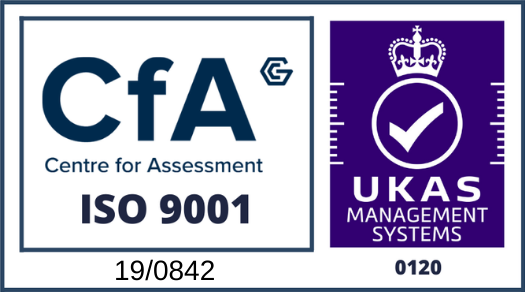Which technology trends are right for your business?
More than ever, businesses are looking to technology to leverage their operations. According to a recent survey, 1 in 3 British organisations say that their digital transformation budget has increased during the pandemic.
It’s likely that the disruption caused by COVID-19 expedited business critical developments for some businesses. Such issues might include the updating of outdated existing legacy systems and processes. For other businesses, it has been a case of adapting their existing digital strategies to overcome new challenges.
So many businesses are investing in new technology. It is, therefore, important that you consider how relevant digital solutions are for your business. This article not only considers what trends are sweeping the industry right now, but also how effective they are.
For each trend we ask the what, who and why:
- What benefits does this trend offer?
- Who is most likely to benefit from this technology?
- Why should they implement this technology now?
As always, decreasing risk remains a prominent factor. Assessing current processes will ensure that you have the appropriate infrastructure to support any new technology.
Extended reality
Extended reality (XR)is an umbrella term for all physical and virtual combined environments. This technology has the potential to drastically change our working processes. Augmented reality (AR) and virtual reality (VR) are the figureheads of this trend. A further mixed reality (MR) is a synthesis of other reality technologies.
AR places digital items in real-life physical spaces, whereas VR blocks out the physical world altogether. VR achieves this with the help of a physical headset that is worn by the user.
Gaming and entertainment franchises are widely recognised for using this type of technology. However, these are not the only industries that benefit from this technology. XR has uses in many other industries too, such as manufacturing, real estate and healthcare. In one example, a surgery team used a 3D model of a patient's leg to guide them through a reconstruction procedure.
MR makes use of augmented and virtual reality technology. This means that digital and physical items can coexist in real-time. Using this technology allows businesses to elevate remote working practices and simulate in-person events like meetings.
Simulating real-life business operations will allow companies to trial possible events and troubleshoot any issues with less cost and risk. However, mixed reality demands a substantial amount of processing power, which accrues additional costs on top of the development cost.
So while XR does offer real benefits to businesses, it does come at a significant cost. This cost means that this solution might not be the most viable option for smaller businesses. According to PwC's Future Forecast research, XR will bring £62.5 billion to the UK economy alone by 2030. Any investment in XR should be aligned with business goals and objectives — regardless of budget.
Cloud computing and migration
Cloud computing allows businesses to access data, software and applications via the internet — wherever and whenever. The cloud has been an asset to organisations looking to improve visibility and make their digital resources more accessible.
Moving to the cloud has allowed businesses to continue their operations even in the face of the drastic challenges. Video conferencing apps and collaboration tools are a couple of examples of cloud-based applications.
An estimated 75% of all databases are being either deployed or migrated to a cloud platform by next year. This finding shows that businesses are rapidly realising the importance of this technology.
There are some different approaches to a business cloud migration, with main advantages including security and cost. On-premise servers require both physical IT security, whereas cloud computing systems are managed by cloud migration providers.
Cloud migration consultants can advise on the right approach, while cloud migration providers can manage and monitor the server. This setup grants businesses more storage space and saves costs in the process. Cloud migration providers also provide a secure alternative to the maintenance that is required with on-premises servers.
Nevertheless, providers cannot guarantee complete safety when it comes to your server. Among the chief concerns of migrating to the cloud is data loss. Any business considering cloud migration should have the best security measures in practice to minimise threat.
There are a couple of ways to maintain security throughout your cloud migration. Examples include implementing multi-factor authentication and ensuring that all data is encrypted where possible.
Cloud computing is a viable option to any organisation who are looking to securely store their data. Cloud migration is particularly useful for SMEs because it allows for scaling operations both up and down. SMEs can, therefore, reduce costs and maximise operations by migrating to the cloud.
Artificial Intelligence and Machine Learning
Artificial intelligence (AI) covers all digital technology that can display intelligence, be this an automated classification system or a chatbot.
Artificial intelligence services can see, read and analyse data — all of which is a major help for businesses. Organisations are able to access large amounts of data analysis by delegating responsibility to machines. Additionally, they are able to reduce the risk of human error.
Another branch of AI, machine learning enables systems to learn from this data without being programmed. This is particularly useful for repetitive tasks, such as scheduling meetings or organising and analysing files.
According to research by Forrester, 1/3 of developers will utilise machine learning to automate developer processes this year as well. By reducing the time spent completing these tedious tasks, developers will be able to focus their efforts into more innovative work.
Despite these potential benefits, businesses frequently fail to integrate AI technology successfully, with long development and training procedures halting productivity. Research shows that only 17% of businesses are adopting artificial intelligence services across their company.
Businesses need to ensure that their current systems structure can support AI, too. Without the necessary infrastructure, output and data storage can be negatively affected.
AI has the potential to help small and big businesses alike in streamlining their operations and improving productivity. The high development and deployment costs means that this technology is less suited for businesses on a smaller budget.
It’s also worth consulting an AI consulting company who can best advise you on how to invest in AI. Their advice will help you gain a better understanding of how you can deploy artificial intelligence services fast and efficiently.
Investing in the future
As businesses look to future-proof their digital strategies, it’s likely that investment will continue on an upward trajectory. But investment is only the beginning.
It is vital that you consider how any new technology will align with your business plan and help you achieve KPIs. Blindly investing in technology with the hope that it will resolve all of your problems is a recipe for disaster.
There is no one solution that will work for every issue. Any potential investment should, therefore, be factored into your business strategy as well as your budget.
As a leading software development company, Audacia has experience working with leading global organisations. We offer expert software development consulting and digital transformation consulting.
Want to know which technology is best suited to your business needs? Talk to us on 0113 543 1300 or at [email protected].


